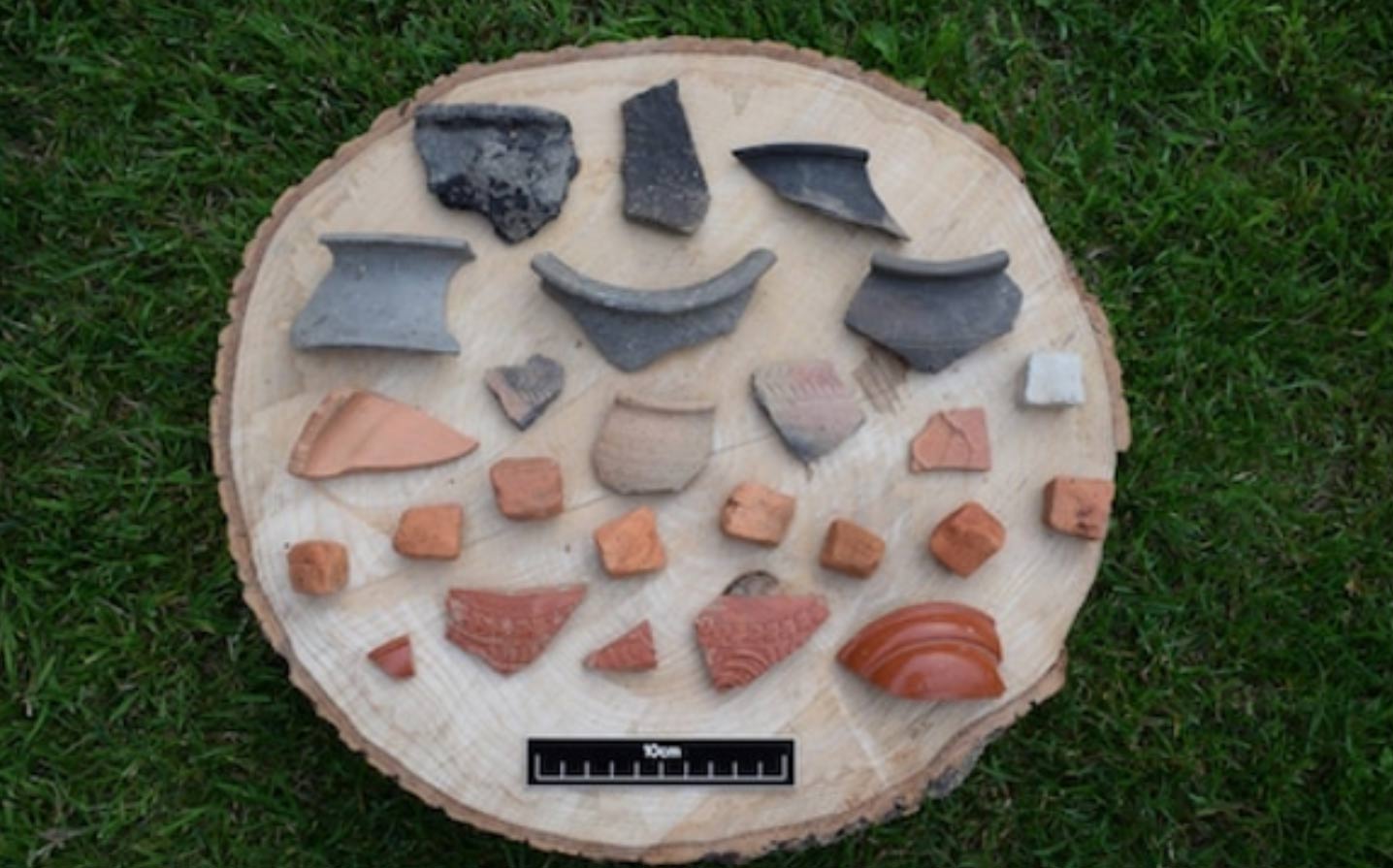Hoard of Roman Coins Leads to the Discovery of Important Site in England
A remarkable discovery of a hoard of Roman coins has led experts to an archaeologically rich site in Yorkshire in England. The hoard of Roman coins was found by enthusiasts using metal detectors and this led directly to the discovery of a major site. This discovery is really exciting the archaeological community and it is expected to offer new insights into the Roman presence in the North of England.
Romans in Yorkshire
The Romans invaded England in the mid-first century BC during the reign of Emperor Claudius. In the 70s AD, the Roman 9 th legion marched into Yorkshire in the north of England, where they established a major center - York. The site was selected because of its strategic value and the legions turned York into a major fortress. This settlement became a city and one of the most important in Roman Britain and Yorkshire over time became increasingly Romanized.

City of York Wall was originally built by the Romans, although little from that era remains. (CC0)
The discovery of the coins
Three years ago, a team of detectorists was exploring an area in Yorkshire that has not been identified. A group of friends, all experienced detectorists, Paul King, Robert Hamer and Robin Siddle, came across a small hoard of silver coins. They alerted the Portable Antiquities Scheme, which records discoveries made by the public. The find was made on private land and the local coroner will eventually decide ownership of the hoard of Roman coins.
The decision was taken to keep the location secret. This was done, according to The Guardian ‘to enable archaeologists to explore the area’ and to protect the location from the unwanted attention of looters. The owner of the land where the site is located has already had one suspected looter trespassing on his land, arrested. There has been an increase in the number of archaeological artifacts being sold on the illegal antiquities market in recent years, especially through auction websites.
- Making Money Divine: Roman Imperial Coins had a Unique Value in Scandinavian Cultures
- Built to Last: The Secret that Enabled Roman Roads to Withstand the Passage of Time
- Finders of Killingholme Treasure Hoard Make a Mint
The detectorists unearthed 10 silver coins that were almost 2000 years old. According to the Smithsonian ‘the coins date to the reign of Emperor Vespasian, who ruled between 69 and 79 A.D’. This was exactly at the time when the Roman legions were occupying the Yorkshire region. This alerted archaeologists to the potential of the location where the coins were uncovered, and sure enough, after further investigations they have found a large Roman-era site.

A silver Denarius of Vespasian, AD69-79. (CC BY-SA 2.0)
The group of experts who made the major discovery was not a typical one. They were crowdfunded by members of the public on the DigVentures sharing platform. According to The Guardian this was ‘founded by archaeologists in 2012 to fill the gap left by severe cuts to research archaeology by universities and local authorities’. The team of experts exploring the settlement have recently also received a grant from the UK National Lottery.
The Roman Settlement
The discovery is believed to be one of the earliest Roman settlements in Yorkshire. A great many shards of fine pottery, mosaics, and elaborate bowls have been unearthed and this suggests trading links with the Mediterranean, indicating that those who resided here were wealthy. The Daily Telegraph reports that the leader of the team, Chris Casswell has stated that “we have discovered evidence for… a high-status site.” The team have also found the remnants of extensive stone walls and it is reported by the Archaeology website, that these indicate the “possible remnants of one or two villas.”
- Metal Detectorist’s Roman Hoard Linked to a Temple that Likely Inspired The Lord of the Rings
- An ‘Absolutely Stunning’ Roman Gold Ring Is Unearthed In England
- How a third-century Roman soldier named Carausius was behind the first ‘Brexit’

The hoard was found at a secret location in Yorkshire, a county that was heavily Romanized. (Public Domain)
The team have also found three neonatal burials, that is the graves of infants. At the time there was a very high level of infant mortality. It seems that the infants were buried with some jewelry and in one burial there is a brooch that once tied a cloak. This is providing more evidence that the site was one where those of high-status lived in the first century AD.
Roman York - Meet the People of the Empire
The Importance of the Settlement
The discovery is one of the most important in recent years in Yorkshire. The apparently early date of the find is exciting and usually, only sites from the 2 nd and 3 rd century have been explored. It is allowing experts to investigate the Roman presence in Yorkshire from the very beginning. The high- status settlement is also going to allow them to have a better understanding of the process of Romanization in the north of England and the lifestyle of the elite in Roman Britain. This find also demonstrates that detectorists can play a positive role in the unearthing of our past and can help to make major discoveries.
Top image: Pottery shards and mosaic tiles found at the secret Yorkshire site. Source: DigVentures
By Ed Whelan



















